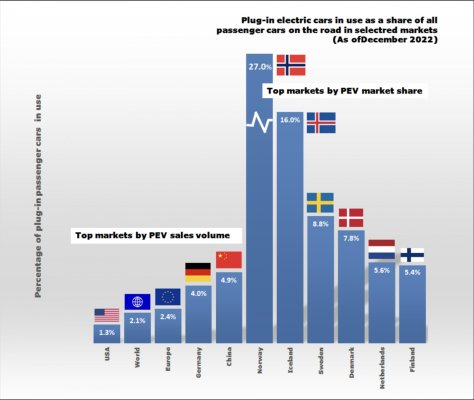Midpack
Give me a museum and I'll fill it. (Picasso) Give me a forum ...
You could use many other developed countries to predict, the USA is FAR behind in terms of % EV adoption, though still growing (despite PR spin to the contrary). From wiki, unable to find 2023 data.Not sure I'm extrapolating, but rather predicting.
Norways has hydroelectric ... the US has solar and wind potential. IMO, our real winner is solar - residential and commercial buildings, not farms. Wind - farms, not residential and solar.
And, perhaps even more than the technical production, the core difference between the US and Norway, may be how we think about public policy.
https://en.wikipedia.org/wiki/Electric_car_use_by_country
Attachments
Last edited:

